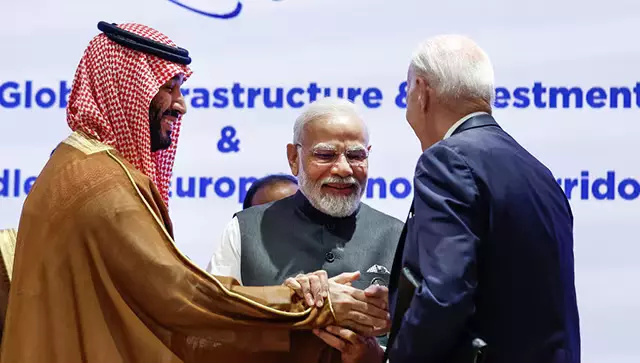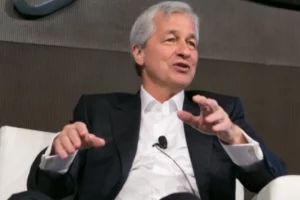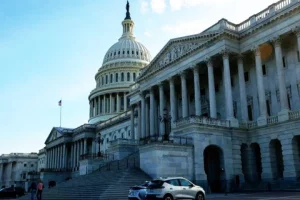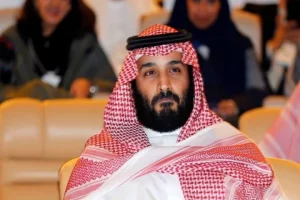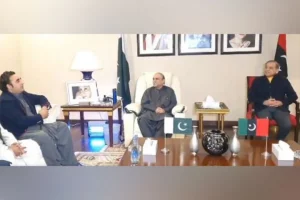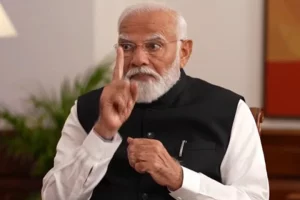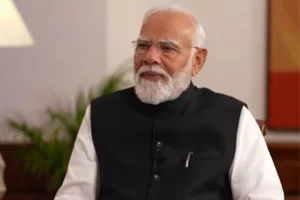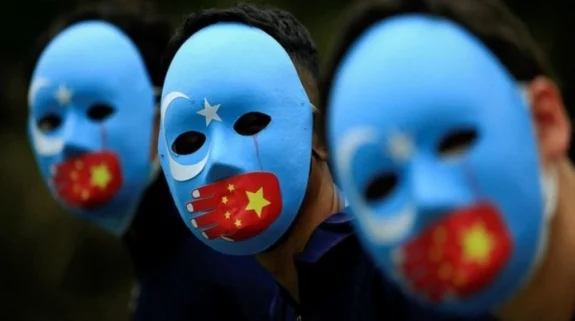During the recently concluded G-20 Summit, India along with the United States (US), Saudi Arabia, the United Arab Emirates (UAE), France, Germany, Italy, and the European Union unveiled the India-Middle East-Europe Corridor (IMEC). Via the railways, roads, and ports, the Corridor is expected to boost connectivity between India, Middle East and Europe and enhance economic growth. In the IMEC, there will be two interlinked corridors: the Eastern corridor will connect India with the Gulf while the Northern corridor will link the Gulf to Europe. Plans are afoot to connect energy grids and telecommunication networks as well. The corridor will build on the existing trade and manufacturing linkages and work to strengthen food security as well as supply chains. The US has described it as a “gateway to our future” that will underpin “shared vision of an open, secure, and prosperous future”. Already, the IMEC has generated much excitement in the strategic circles and is being described as a game-changer. It is also seen as the ambitious plan by India, US, and Europe to rival China’s Belt and Road Initiative (BRI).
A very well made animation of the Proposed India-Middle East-Europe Economic Corridor
This is like the Chola Empire trade in the westerly direction pic.twitter.com/SisyON0pO4— Colonel DPK PILLAY, PhD, Shaurya Chakra (@dpkpillay12) September 11, 2023
The unveiling of IMEC along with the Partnership for Global Infrastructure and Investment (PGII) signifies India’s new geoeconomics. Geoeconomics is defined as the use of economic tools for geopolitical ends. As globalization picked up pace and complex interdependence became a reality, geoeconomics has emerged as one of the important components of grand strategy and international politics. China’s BRI is seen as a project with geoeconomic objectives. As many countries across Asia and Africa find themselves saddled with unsustainable levels of Chinese debt and expensive infrastructure projects, Beijing’s geoeconomic playbook is apparent. There have also been concerns about the trade deficits with China and the influence it generates for Beijing. It was precisely for this reason that India decided to not enter into the Regional Comprehensive Economic Partnership (RCEP).
The Covid-19-induced disruptions, the crises of global supply chains and the growing trend of weaponization of trade and finance has underscored the strategic importance of geoeconomics as a policy tool. No major economy is immune from geoeconomics. Sometimes, geoeconomics is more effective and useful as a policy tool than other tools. In the last few years, India has increasingly been deploying economic and trade policies, connectivity, and infrastructure initiatives for geopolitical objectives. India’s willingness to negotiate free trade agreements with diverse countries such as the UAE, Australia, UK, Mauritius, Canada and Israel while staying out of the RCEP is a prominent example of such an approach. The quick and large-scale assistance to crisis-hit Sri Lanka over the last year could be seen as an example of India’s geoeconomics.
The IMEC and PGII needs to be seen through a similar geoeconomic lens. It is likely to further strengthen strategic and economic ties between India and the Gulf and India and Europe. Close ties with the US, economic dynamism, expanding strategic convergence, and willingness to re-imagine economic and strategic futures are the common factors that bind the participants in the IMEC.
The IMEC is as much a result of geopolitics as it is of the economic imperatives shaping the post-Ukraine world order. India is courted by the US and Europe as well as by Russia for deepening strategic engagement. The IMEC demonstrates the Euro-American interest in building closer economic ties with India. While the US has launched Indo-Pacific Economic Framework and seeks to provide alternatives to the China-dominated economic order in the Indo-Pacific, IMEC seeks to reshape trade and economic links in the Middle East and Europe.
India and the US are common and important players in both these initiatives. Countering China is one of the strategic objectives underpinning the IMEC. Italy is on its way out of China’s BRI. Other European countries are also rethinking their dependence on China for trade and investments. Therefore, in the changing geoeconomic landscape, India emerges as a safer, perhaps, more attractive bet, although India’s domestic challenges will have to be overcome to realize the full potential of economic connectivity.
India has long been interested in building trade and connectivity links with Europe. The closer ties with Europe helps India to access much-needed capital and technology for economic development and green transition. India is in talks with the European Union (EU) for the Free Trade Agreement (FTA) as well. It has engaged proactively with the Nordic countries as well as the countries in Southeast Europe. The IMEC will bring India closer to Europe. Moreover, in the last few years, India has deepened, to an unprecedented level, strategic ties with the key Gulf players, especially with the UAE and Saudi Arabia. India’s ties with the US have also been on the upswing. The IMEC seeks to build on the closer ties between India, Gulf, US, and Europe. The economic corridor complements India’s minilateral initiatives with the US in the Middle East — India, Israel, US, and UAE (I2-U2) and India, US, Saudi Arabia, and UAE.
The unveiling of the IMEC raises questions about the future of the International North-South Transport Corridor (INSTC). The idea of INSTC was to link India with Europe via Iran and Russia. In the past, the INSTC has had many false starts. Even last year, in 2022, in the wake of the Russian invasion of Ukraine, an attempt was made by Russia to operationalize the INSTC via the Caspian Sea and Iran to trade with India. It had sent two containers via Astrakhan to Mumbai. However, the deteriorating relationship between the West and Russia and Iran puts the INSTC at constant risks of sanctions and disruptions. Key difference between IMEC and INSTC is that UAE, and Saudi Arabia are US allies and economic powerhouses on their own whereas Iran and Russia remained at odds with the US and are not in a position to shape the economic future of Eurasia. Therefore, in the best of times, INSTC would have had a limited potential as economic activity along the INSTC route and partner countries is limited.
As of now, it remains to be seen whether the IMEC will come at the cost of INSTC or it will complement the INSTC. Interestingly, Russian president Vladimir Putin while speaking at the Eastern Economic Forum has said that, “I believe that this will only benefit us. I believe that this will only help us develop logistics… Meanwhile, the additional movement of goods along this corridor is, in fact, an addition to our North-South project. We have nothing here we see something that could somehow hinder us”. The future impact of IMEC on INSTC will be something that analysts will have to watch out for. It will also define the debates about Eurasian connectivity. India’s geoeconomic preferences, especially its choice of trading partners and trade routes, will determine the impact of IMEC on INSTC.
https://t.co/J9phyG0pBP
Putin also said India-Middle East-Europe Economic Corridor (IMEC) will no way affect Russia infact it will benefit the country.— Saikripa (@saikripa_jpd) September 13, 2023
While the IMEC has generated hopes and excitement, the optimism needs to be tempered a bit. Back in 2017, the Asia-Africa Growth Corridor (AAGC) launched by India and Japan was seen as an initiative that will rival BRI and bring tangible economic and geopolitical gains. Just like the participants of the IMEC, India and Japan had complementary strengths and convergence of interests on a range of issues. Yet, in the last six years, AAGC seems to have not taken off. In fact, as of now, AAGC is largely missing from the strategic vocabulary.
As Delhi seeks to play an increasingly important role in global economy and geopolitics, the IMEC could perhaps emerge as one of the foundational pillars of India’s new geoeconomics.
Also Read: Arabs applaud India-Middle East-Europe economic corridor deal
(Sankalp Gurjar is an Assistant Professor at the Department of Geopolitics and International Relations, Manipal Academy of Higher Education, Udupi, India. He writes on International Relations of the Indo-Pacific, Great Power Politics, and the Geopolitics of the Indian Ocean Region and is the author of The Superpowers’ Playground: Djibouti and Geopolitics in the Indo-Pacific in the 21st Century (Routledge: 2023).






